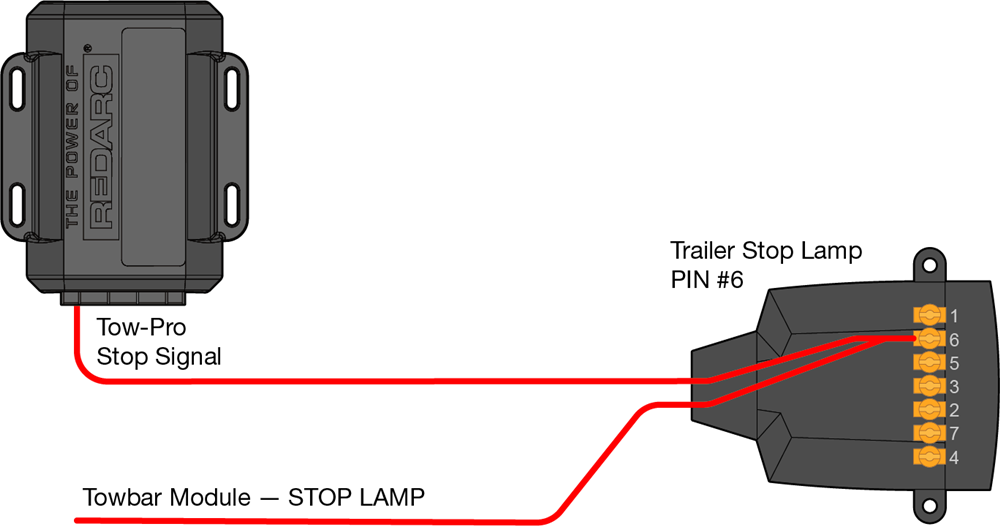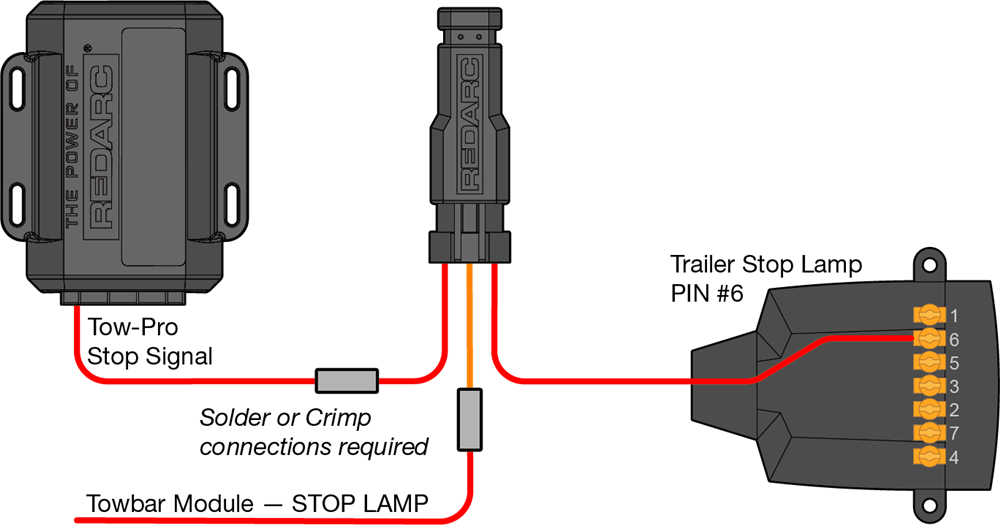How to fit a Tow-Pro Elite into a modern vehicle
REDARC receive many enquiries regarding fitting a Tow-Pro Elite into a modern vehicle that uses a Can Bus system for signalling and applies brakes for adaptive cruise control, stability control. downhill assist etc.
ARE THERE ANY SPECIAL INSTRUCTIONS REGARDING THIS INSTALLATION?
The REDARC Tow-Pro Elite can be fitted to any vehicle.
The critical aspect is the wiring and where/how the wiring interfaces with the vehicle.
REDARC have developed and released vehicle specific Tow-Pro wiring kits (TPWKIT) that assure the installer a quality fitment, without fear of setting fault codes or worse still damaging sensitive electronics within the vehicle.
REDARC’s first recommendation is to use a REDARC TPWKIT when installing a Tow-Pro Elite to a modern vehicle.
Whilst the REDARC TPWKIT range covers a significant portion of the popular vehicles, at times an installer will encounter a vehicle for which REDARC have not developed a TPWKIT.
The Tow-Pro Elite suits the vehicle, but it is the wiring for that specific vehicle that is required.
In those instances, REDARC recommend the following wiring configuration:
BLACK WIRE:
Battery power, connected directly to the battery through high quality fuse. REDARC recommend the use of a 25 Amp fuse at the battery.
WHITE WIRE:
The earth is to be connected to a convenient chassis/body earth bolt.
Caution: Some modern vehicles have the body earthed but not the chassis, which for NVH can be insulated from the body. Installers need to always confirm the earth point is a qualified earth.
BLUE WIRE:
The trailer brake control is connected from the Tow-Pro Elite main unit to trailer brake pin (5) of the trailer socket.
RED WIRE:
A brake lamp signal is required to activate the electric trailer brake controller.
In modern vehicles, the safest location to source this stop lamp signal is at the trailer socket.
BRAKE LAMP TERMINAL OF THE TRAILER SOCKET
Sourcing the brake lamp signal from the brake light wire of the trailer socket will capture all braking events which illuminate the vehicle brake lights. In a modern vehicle these can be either driver generated (foot on the brake pedal) or vehicle generated (Adaptive cruise control, autonomous emergency braking etc)
Please note that if the brake signal is sourced at the trailer socket, and the installer is NOT using a REDARC TPWKIT, a device MUST be fitted on the vehicles brake light wire on the vehicle side of the point where the brake signal is sourced.
This prevents the back feeding of 12V into the vehicle when the Tow-Pro is manually activated whilst illuminating the trailer brake lights.
Historically installers have used the Brake Pedal Switch. As the source of the brake signal however on the modern vehicle, REDARC DO NOT recommend sourcing the stop lamp signal from the brake pedal switch. Increasingly the brake pedal switches are not 12V, operate other vehicle systems or are controlled by a vehicle ECU.
Sourcing the brake signal at the brake pedal will also only detect braking events when the brake pedal is depressed (and the switch activated) and not brake applications activated by other on-board systems.
Installation - Without EPDK Device


For older vehicles, not supplied with driver aids e.g Cruise, Traction or Stability Control, Brake/Throttle Override
Installation - With EPDK Device


For modern vehicles, equipped with driver aids and Advanced Safety Systems e.g Adaptive Cruise Control, Assisted Emergency Braking and Autonomous Emergency Braking.
REDARC recommend
1. The use of TPWKIT’s to install the Tow-Pro Elite.
2. For vehicles for which a TPWKIT is not available, the second method and reinforce again the need to fit the device on the vehicle brake wire between the vehicle and the junction of the wires to the Tow-Pro Elite and the trailer socket, to protect the vehicle
(Note: if using a TPWKIT, it is not necessary to add this device. If it is required it will be already installed on the TPWKIT harness.)
